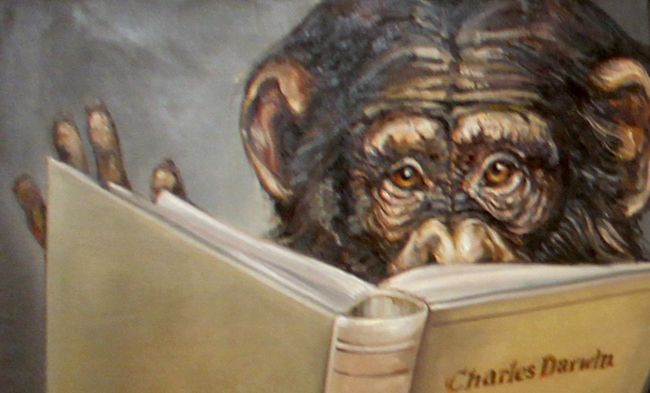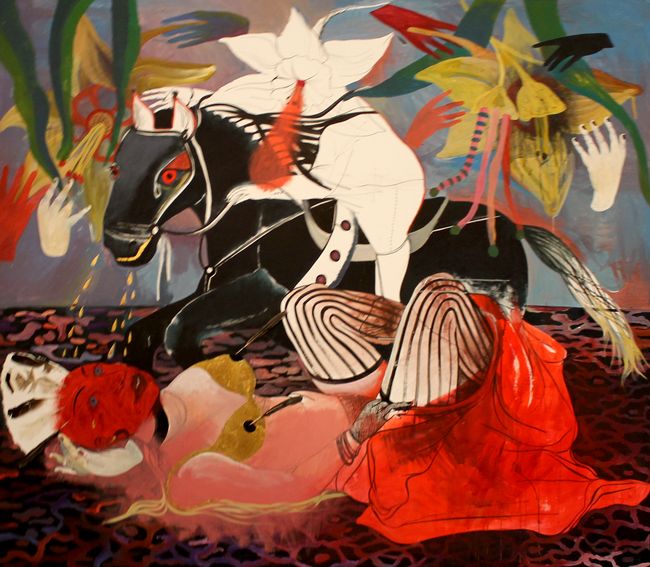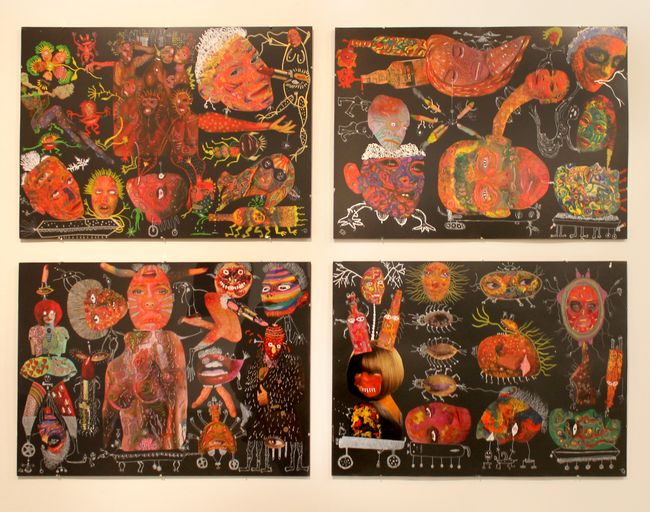My family and other beasts
The Modern Art Research Institute hosts the exhibit “Mechanism of Evolution”
The exhibit is part of the “New Directions” platform. It displays paintings, sculptures, installations, photographs, video art, and experimental-technique works. The project involves 43 participants – from the well-known Illia Chychkan to the new names.
The evolution will be crowned one day with the… bio-robot. At least this is the opinion of the “Mechanism of Evolution” project inspirer and manager Ihor Abramovych and the exhibit co-curators Andrii Sydorenko and Oleksandr Khalepa.
“The project is in fact reflections on contemporary bio politics, on how the latter combines the mechanistic approach and evolutionism,” the exhibit data sheet says. The only drawback is that it is very indirectly related to what you can really see in the exposition at the Modern Art Research Institute. On hearing the words “evolution” and “robots,” most of the participating artists seem to have decided not to heed further explanations of the curators. As a result, they depicted “evolution” the way they remembered it from biology schoolbooks or as robots or some other manmade things. The third group of “creators” seem to have heard nothing at all – they submitted works that have nothing to do with the exhibit’s theme (yet, if need be, any link “of everything with everything” can always be substantiated).

The work of Illia Chychkan looks, quite predictably, like a king of Darwinists in the classical “high-school” sense. His chimpanzee, lovingly painted with oil colors, is not as simple as it may seem at first glance. The picture was exhibited in the summer at Kyiv’s Karas Gallery as part of Illia and Sasha Chychkans’ joint project “Psychodarwinism: the Evolution of Psychos.” Soon after, the gallery was sued “for hurting the feelings of believers.” (Some of the works in the series were stylized as mounted icons.) The unprecedented “religious censorship case” received no further development. Nevertheless, the little “Darwinist” ape at the Modern Art Research Institute can be interpreted as a gesture of artists’ and gallerists’ solidarity in the struggle against censorship. Without any efforts on the part of the author, it has become an illustrative symbol of spiritual evolution – a confrontation between “tomorrow” (contemporary art) and “the day before yesterday” (patriarchal values) in Ukraine.

Yet the Modern Art Research Institute also chose not to “tug the tiger by the whiskers and tail,” exhibiting the “ape icons.” They preferred “eternal values” – namely, philosophizing by means of art or laughter mixed with the latter – to “dubious politics” (and, regrettably, the burning issues of the day). The cycle “Evolution Is an Escape from Death” by Oleksandr Liapin, a well-known photo artist and, in the past few years, a primitivist painter, combines both tendencies. It resembles Bosch.
The Ukrainian followers of the “anthropogenic” way of human development can be recognized by their love of installations (instead of traditional painting). Once you enter the institute’s exhibition hall, your eye catches a wooden “Icarus” by the young but very sought-after artist Anton Lohov. A gigantic multicolored space satellite, which seems to be assembled from a mammoth wooden Lego, hovers under the very ceiling, as if watching the visitors. Luckily, it is not going to fall. Conversely, the interactive sculpture “Defragmentation” by Eduard Potapenkov, Serhii Koriievskyi, and Liudmyla Rashtanova stands on the floor from the very beginning, sticking out its vein-like cables and winking with colored bulbs. In the artists’ opinion, the games of intellect and technologies may well lead to a sad finale – the death of humankind, “like in a disaster movie.”

About a third of the works in “Mechanism…” very remotely correspond with the declared “evolutionary” theme. This particularly applies to photography. But… This time thematic indiscriminateness has only benefited the project on the whole. The works of as many as 43 very different artists – from venerable or more or less known (in addition to the abovementioned, it is Vadym Bondera, Hamlet Zinkovskyi, Oleksandr Klymenko, Roman Mykhailov, Nina Murashkina, Roman Piatkovka, Oksana Chepelyk, et al.) to practically unknown ones – go together very well within the project’s framework, even though they are executed in diverse techniques.
The exposition will remain open until November 21.
Newspaper output №:
№69, (2017)Section
Time Out





